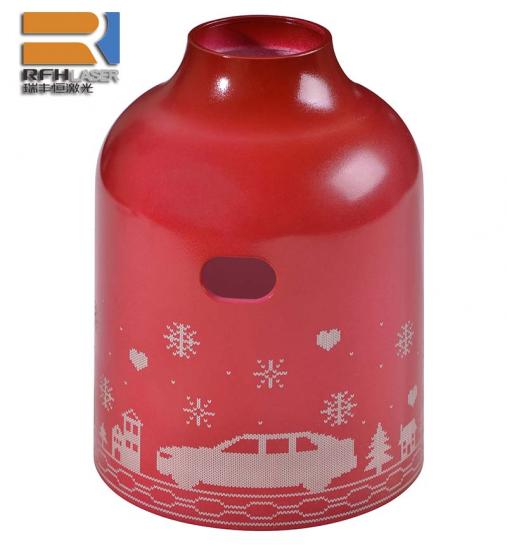Blog más reciente
Cómo funciona el corte y grabado láser 3D
Apr 11 , 2022How 3D laser cutting and engraving works
Metal object processed with 3d laser printer
3D is one of the most important innovations in the field of laser processing and is used in particular in the cutting of various materials and objects such as sheets and tubes, but also to create precise and aesthetically valuable engravings on metals, crystal or plexiglass.
The Laser 3D Cut
The need to cut two-dimensional and three-dimensional pieces such as tubes with round, square or rectangular section, profiles, but also beams, sheets and flat sheets has led to the development of 3D laser cutting technology that allows you to create a wide range of industrial components for various sectors, as well as very high quality manufacturing products.
The main sources used in this technique are the fiber optic laser. 3D laser processing is based on the principle of concentrating a coherent beam of light on a limited area in order to be able to cut or engrave the material.
In this specific case the laser machine, in addition to operating on linear axes X, Y and Z, also acts at the level of inclination and rotation.
3D laser cutting is successfully used for sheet metal processing, allowing the most varied geometric shapes to be engraved and thus providing added value to the final product.
The 3D laser also offers the opportunity to modify the project at any time and is therefore an advantageous technology both for producing samples and for mass production.
Laser cutting and engraving on metals
For further information read -> From the C02 Laser to the Fiber Laser, let's discover the most popular types of lasers

uv laser | green laser | Ultraviolet lasers | uv dpss laser | nanosecond laser | UV laser source | Solid State Lasers
Advantages
The great flexibility and adaptability of the laser allows operators to work easily and easily both sheets and complex metal materials, using reduced bending radii so that the 3D laser technology is perfect for cutting both two-dimensional and three-dimensional components, small, medium and large.
Other advantages of 3D laser cutting are:
the speed of execution with consequent savings in production costs,
the minimum heating of the processed material which in this way preserves all its original characteristics intact,
the absolute absence of mechanical deformations of the worked piece,
the high quality of the cutting edge, which is extremely clean, so once the laser cutting has been made there is no need for further processing.
laser cutting and engraving on wood
How 3D laser engraving works
A process made possible by the use of the 3D laser is the incision with which a surface layer of a certain material is removed, thus creating a millimeter notch inside it.
With the use of this highly innovative, fast and efficient technique, it is possible to engrave various graphic elements including logos, codes, texts or decorative elements.
The engraving has a high aesthetic quality ensuring accurate and uniform details and is indelible so it does not deteriorate or fade over time.
The flexibility of this type of laser allows to operate on different surfaces and materials such as metal and stainless steel; other areas of use are 3D laser engraving on crystal, glass and plexiglass.
Punzonado de un molde de acero trabajado con el Láser. En el caso del grabado láser de vidrio, este se realiza principalmente utilizando la fuente láser de CO2. El rayo láser penetra en el cristal y crea los pequeños puntos que luego forman la imagen que desea grabar, lo que garantiza un procesamiento de detalles ultrafinos incluso cuando se trata de una superficie curva.
Las modernas máquinas de grabado láser 3D para vidrio están equipadas con escáneres de alta velocidad y precisión, y un software avanzado que les permite ser utilizadas en particular para producir materiales publicitarios elegantes, ya que el láser le permite grabar fotos, diseños de filigrana, en vidrio. personajes y logotipos.
Por su parte, el grabado láser 3D en plexiglás se utiliza para personalizar los gadgets de forma única y elegante. El grabado láser sobre plexiglás también se suele realizar con máquinas láser de CO2 que, gracias al efecto del calor, actúan sobre el material creando los diseños deseados.
Aplicación láser en objeto de plexiglás
Campos de aplicación del procesamiento láser 3D
Los sectores en los que se utiliza el procesamiento láser 3D son muchos. La flexibilidad y versatilidad del corte por láser 3D hacen que esta técnica sea ideal para sectores como la automoción, la ingeniería, la creación de prototipos aéreos y navales y, en general, para el sector del transporte.
La tecnología 3D permite modelar componentes y soportes también en otros ámbitos como electrodomésticos, sectores eléctrico y electrónico, construcción y mobiliario.
Este tipo de procesado también es ideal en áreas relacionadas con el mundo de la moda, como la joyería, mientras que el grabado láser 3D de superficies permite marcar diferentes elementos no solo en dos sino también en tres dimensiones, facilitando enormemente la tarea de aquellos operarios que se ocupan de con el micromecanizado mecánico y el sector del molde.
Para más información lea -> Grabado Láser en Joyas: rapidez, precisión y eficiencia
La estrecha colaboración y sinergia entre los distintos sectores industriales y los fabricantes de maquinaria láser ha permitido el nacimiento de soluciones técnicas que hasta hace unos años ni siquiera podían imaginarse y el futuro parece deparar otras sorpresas interesantes.